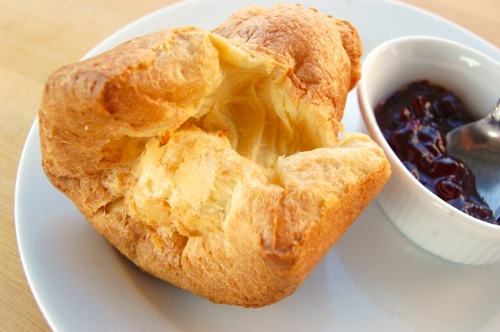Popover recipes tend to be very consistent in their proportions since the science that underlies them is constant. Herbs and other flavorings are an exception to that rule, and are popular with American cooks (traditional Yorkshire pudding has no herbs). Popover recipes can, however, differ in technique. I’m stymied by recipes that tell the cook to whisk the batter gently or until “just combined.” That’s a rule for pancake or crêpe batter — which popover batter closely resembles — or for quick breads or cakes, where you don’t want much gluten development.
It’s the opposite with popovers. In this case you want lots of developed gluten to give the rising bread the elasticity it needs to stretch and hold steam. For that reason I recommend a blender or a food processor. If you have neither of those and rely on a whisk, use plenty of elbow grease, and consider using bread flour (or a mix of half bread and half all-purpose) to amp up the gluten content. By no means use pastry flour, cake flour or a fine Southern flour, which won’t do the job here. Either go Yankee or make dinner rolls instead. The ingredients are:
1/2 ounce (1 tablespoon) melted, unsalted butter
5 ounces (1 cup) all-purpose flour
3/4 teaspoon salt
2 eggs, room temperature
8 ounces (1 cup) milk, room temperature
READ ON
